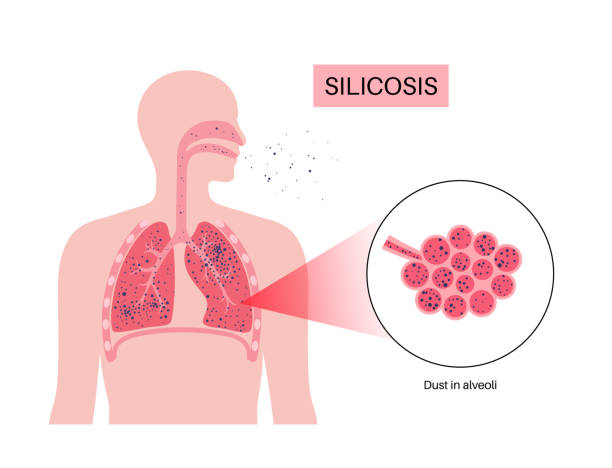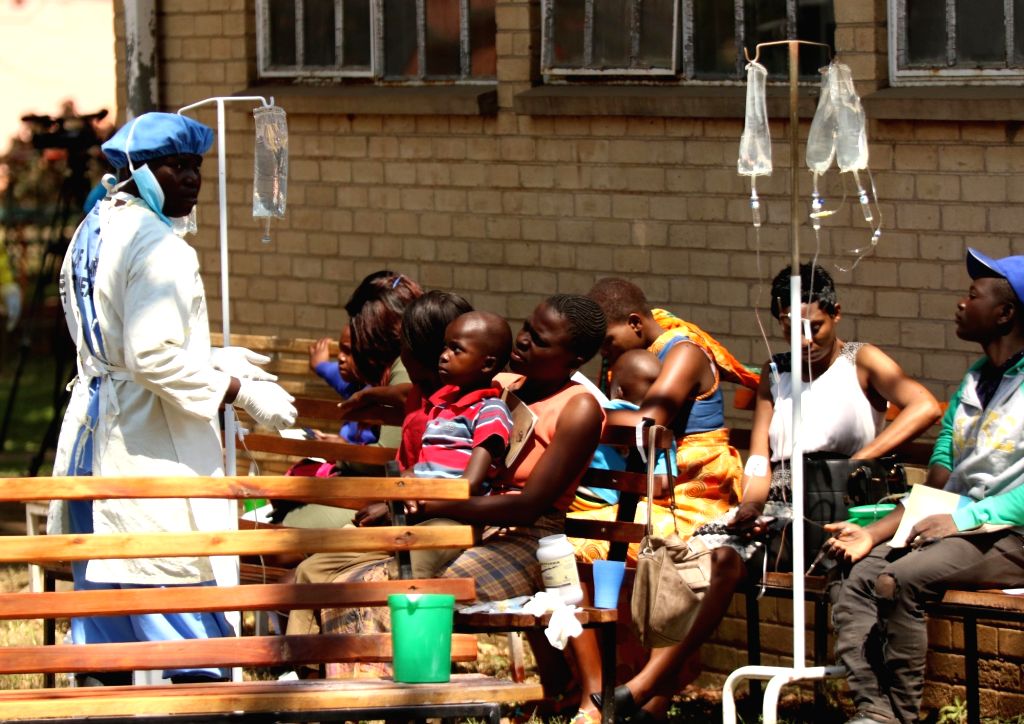Silicosis epidemic plagues Zimbabwe’s artisanal miners
Share

In the bustling high-density suburb of Amaveni, in the mining city of Kwekwe, one man stands out
among the few artisanal miners who have achieved remarkable success through gold mining in the
Midlands province.
Meet Masocha Banda, a trailblazing mukorokoza whose entrepreneurial spirit has propelled him to
acquire numerous properties and establish thriving businesses.
Since embarking on his artisanal mining journey in 2015, Banda has demonstrated exceptional
financial acumen, wisely investing his earnings in lucrative ventures. His shrewdness has paid off
handsomely, resulting in a diverse portfolio of properties and the initiation of several enterprises.
Among his notable achievements, Banda now boasts a fleet of five commuter omnibuses that serve
the busy Gokwe-Kwekwe route. This strategic investment has not only contributed to the region's
transportation infrastructure but has also become a testament to Banda's astute business sense.
Unlike many of his fellow gold panners, Banda has managed to maintain a harmonious family life.
With one wife and two children, he has prioritised stability and unity amidst the challenges of his
chosen profession. His ability to strike a balance between work and family has played a role in his
remarkable success story.
However, Banda's journey has not been without its share of adversity. Currently, he finds himself
relying on oxygen support due to his battle with Tuberculosis and the deadly Silicosis disease.
For the past five months, he has persevered, clinging to hope and prayer, determined to not let his
health setbacks hinder his aspirations for a fulfilling life.
Banda's situation is not unique, as many others face similar predicaments, fighting for their lives
either in healthcare institutions or within the confines of their homes. Their struggles serve as a stark
reminder of the risks and sacrifices associated with the artisanal mining industry.
Silicosis is a type of pulmonary fibrosis, a permanent and irreversible parenchymal lung disease
caused by breathing in tiny bits of silica, a common mineral found in sand, quartz and many other
types of rock. Silicosis mainly affects workers exposed to silica dust in jobs such as construction and
mining.
Silicosis causes the collapse of lungs mainly due to inhaling of mining dust and chemicals. The use of
chemicals like mercury and cyanide in the mining sector is believed to be fuelling cases of the
disease.
Silicosis is a work-related lung disease which has symptoms of coughing, inflammation (swelling) and
fibrosis (scarring). These signs and symptoms can cause shortness of breath (dyspnea), Fatigue,
Weakness, and Unintended weight loss.
In 2019, the devastating reality of Silicosis shook the lives of many, leaving a trail of sorrow and loss.
Among those affected is another gold panner Makasi Phiri of Amaveni, Kwekwe, who witnessed the
disease claim the lives of relatives and acquaintances.
He painfully recounts the challenges faced by patients, as they struggle to breathe and walk,
ultimately becoming bedridden until their untimely demise—especially for those without the means
to afford life-sustaining oxygen.
“I first knew about this disease in 2019 and I know of quite a number of people, including my
relatives who have died because of Silicosis. Patients have challenges in breathing and walking, thus
they end up being bedridden until they die, especially those who not have enough money to buy
oxygen,” said Makasi
According to the Ministry of Health and Child Care, the mining district of Kwekwe has seen a
distressing surge in Silicosis cases.
The disease has to date claimed about 22 lives in the district this year, while others fight for survival
within the intensive care unit of Kwekwe General Hospital.
In a recent statement, Dr. Patricia Mapanda, the Medical Superintendent of Kwekwe General
Hospital, revealed the grim reality of the Silicosis epidemic plaguing the district.
“We currently have six silicosis patients at our institution and we have so far recorded 22 deaths. It is
a disease which causes chest infections mainly from mining activities. We have been receiving more
of these cases recently,” Kwekwe General Hospital Medical Superintended Dr. Patricia Mapanda was
quoted as saying recently.
Zimbabwe, home to over 500,000 artisanal and small-scale miners (ASMs), finds itself grappling with
an alarming epidemic. The livelihoods of over one and a half million people depend on the outcomes
of this industry, making it a matter of utmost urgency.
ASMs, toiling under archaic working conditions, face relentless exposure to high levels of harmful
silica dust. This perilous environment has been directly linked to an elevated risk of contracting
tuberculosis and the lethal Silicosis disease.
Day in and day out, these miners navigate dusty surroundings, unknowingly jeopardising their health
and future aspirations.
Some mining experts said the situation demands immediate attention and action.
“The plight of Zimbabwe's artisanal miners cannot be ignored. Urgent reforms are needed to
improve working conditions, provide adequate protective measures, and offer comprehensive
healthcare support to those affected.
“The time has come to prioritise the well-being and safety of these hardworking individuals, who
contribute significantly to the nation's economy. Unfortunately, we are now losing these workers to
the deadly Silicosis disease as well as TB,” said one miner who has a claim near Globe and Phoenix
Mine.
“It is our collective responsibility to shed light on this silent epidemic. By raising awareness,
demanding change, and extending our support, we can pave the way for a safer and healthier future
for Zimbabwe's artisanal miners. Only then can their dreams be liberated from the suffocating grip
of Silicosis, allowing them to breathe freely and pursue a brighter tomorrow,” he said.
Amidst this crisis, Midlands Provincial Affairs and Devolution Minister, Owen Ncube, emphasised the
critical importance of miners safeguarding themselves during their work.
Acknowledging the six patients currently relying on oxygen support, Minister Ncube urged miners to
prioritise the well-being of their workers, striving to prevent further cases of Silicosis.
“I therefore urge miners to protect their workers to prevent such cases,” said Minister Ncube.
Recognising the urgency of the situation, Minister Ncube called upon the Civil Protection Unit and
other stakeholders to spearhead awareness campaigns, disseminating vital information about the
risks and prevention of Silicosis.
These initiatives aim to equip miners with the knowledge necessary to protect themselves and
reduce the incidence of this devastating disease.
The current state of affairs highlights the dire obstacles faced by miners in accessing occupational
health and safety services. Insufficient resources and a lack of diagnostic skills in identifying
occupational health issues have compounded the challenges, especially in the face of the high
tuberculosis burden prevalent in developing countries.
Additionally, comprehensive support systems, including improved access to diagnostic services and
robust occupational health infrastructure, are imperative to protect the lives and futures of those
working tirelessly in the mining industry.
As the Silicosis crisis intensifies, it is crucial for stakeholders, government bodies, and communities
to join forces.
Silicosis, a debilitating lung disease, casts its shadow over various sectors, including mining and
quarrying, construction, stone work, pottery, sandblasting, and foundry operations. Workers
exposed to high levels of silica dust in these industries face the risk of contracting this incurable
condition, which demands careful management and preventive measures.
While a cure for Silicosis remains elusive, there are strategies to manage its impact. Some of the tips
to mitigate the effects of the disease are:
1. Quit smoking or using tobacco products as it exacerbates lung damage.
2. Personal protective equipment or job change: Utilising proper personal protective equipment
(PPE) is vital to minimize silica dust exposure.
3. Bronchodilators for improved airflow: These medications can help alleviate breathing difficulties
and enhance airflow in the lungs, providing some relief to individuals battling Silicosis.
4. Vaccinations for respiratory protection: Obtaining flu and pneumonia vaccines offers vital
protection to the airways, reducing the risk of respiratory infections that can further compromise
lung function.
5. Supplemental oxygen, if necessary: For individuals with severe Silicosis, supplemental oxygen may
be required to alleviate respiratory distress and enhance quality of life.
Amidst the challenges, there is a glimmer of hope on the horizon. Ongoing clinical trials are exploring
potential treatments for Silicosis, with researchers focusing on anti-fibrotic drugs. These innovative
therapies hold promise in managing certain forms of the disease, offering new avenues for patients
in their battle against Silicosis.









